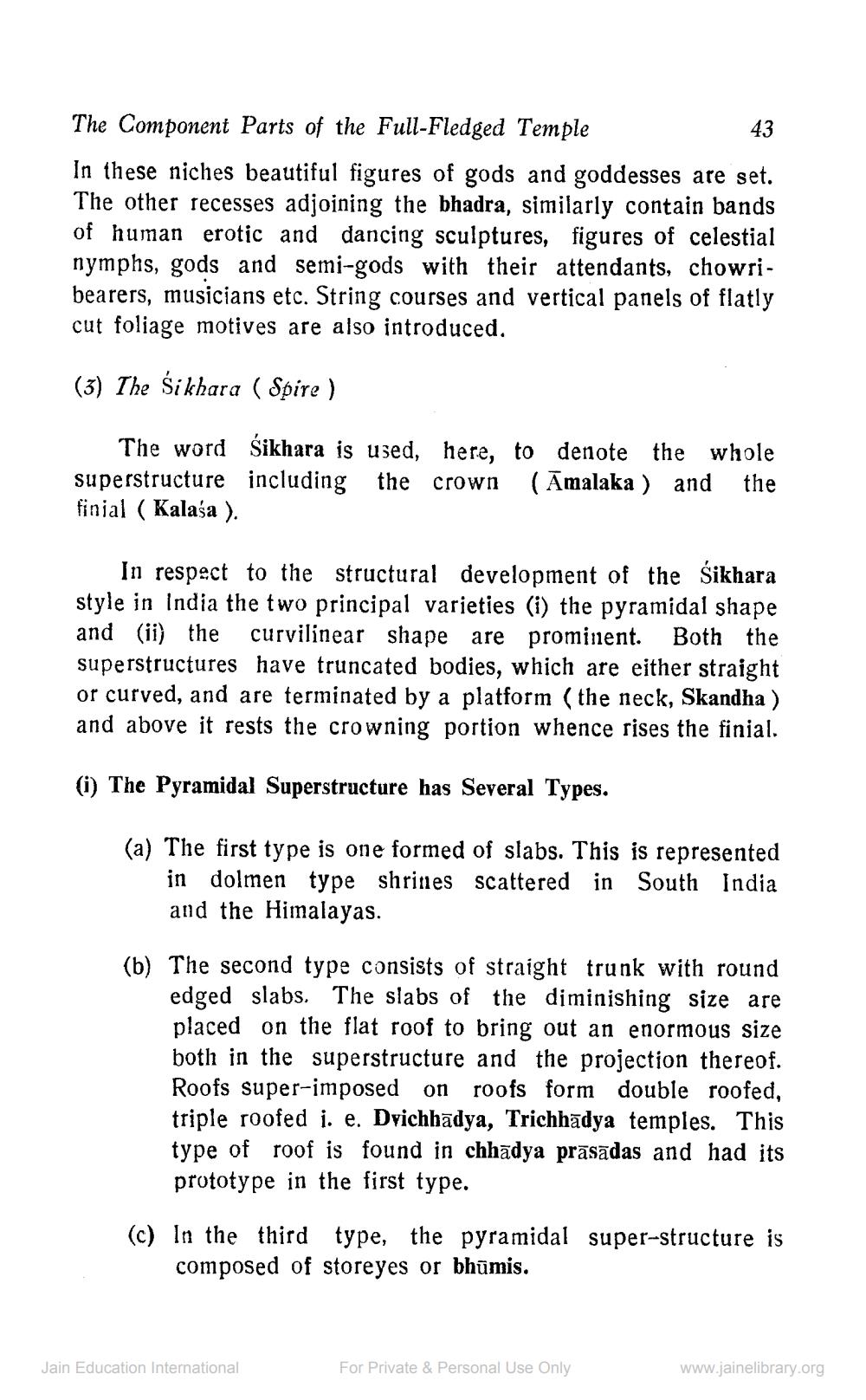________________
43
The Component Parts of the Full-Fledged Temple In these niches beautiful figures of gods and goddesses are set. The other recesses adjoining the bhadra, similarly contain bands of human erotic and dancing sculptures, figures of celestial nymphs, gods and semi-gods with their attendants, chowribearers, musicians etc. String courses and vertical panels of flatly cut foliage motives are also introduced.
(3) The śikhara ( Spire )
The word śikhara is used, here, to denote the whole superstructure including the crown (Amalaka ) and the finial ( Kalasa ).
In respect to the structural development of the Sikhara style in India the two principal varieties (i) the pyramidal shape and (ii) the curvilinear shape are prominent. Both the superstructures have truncated bodies, which are either straight or curved, and are terminated by a platform (the neck, Skandha ) and above it rests the crowning portion whence rises the finial.
(i) The Pyramidal Superstructure has Several Types.
(a) The first type is one formed of slabs. This is represented
in dolmen type shrines scattered in South India and the Himalayas.
(b) The second type consists of straight trunk with round
edged slabs. The slabs of the diminishing size are placed on the flat roof to bring out an enormous size both in the superstructure and the projection thereof. Roofs super-imposed on roofs form double roofed, triple roofed i. e. Dvichhādya, Trichhādya temples. This type of roof is found in chhādya prāsādas and had its prototype in the first type.
(c) In the third type, the pyramidal super-structure is
composed of storeyes or bhūmis.
Jain Education International
For Private & Personal Use Only
www.jainelibrary.org




